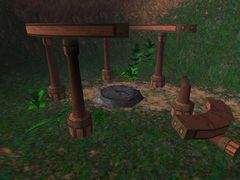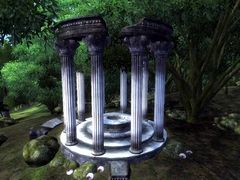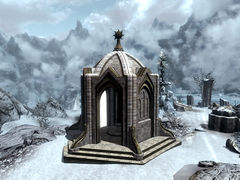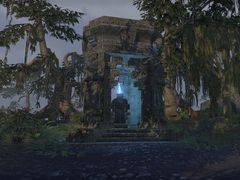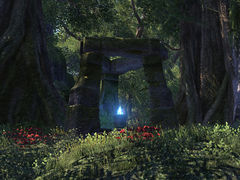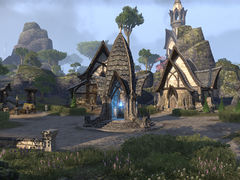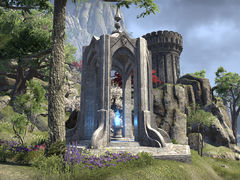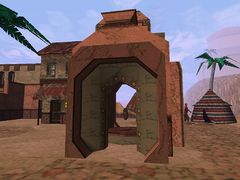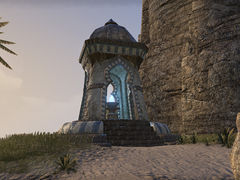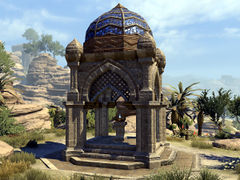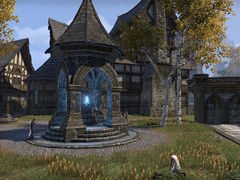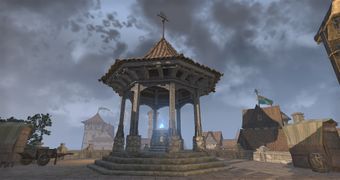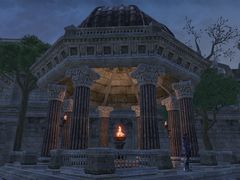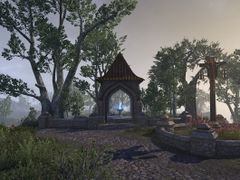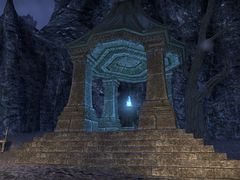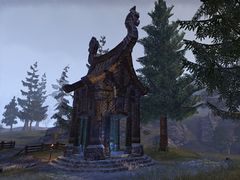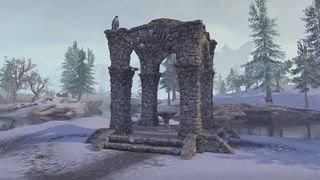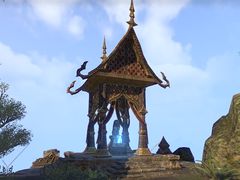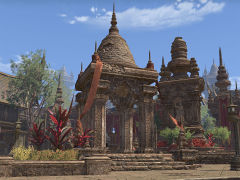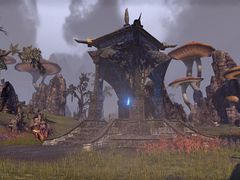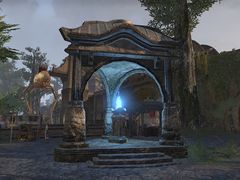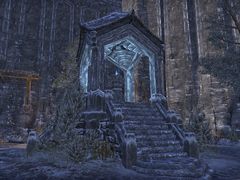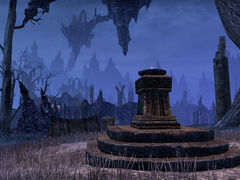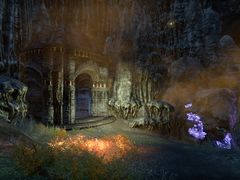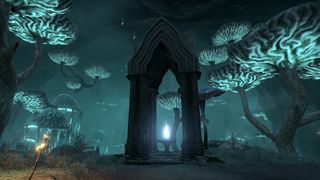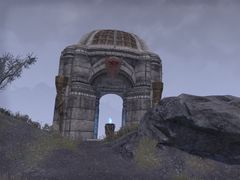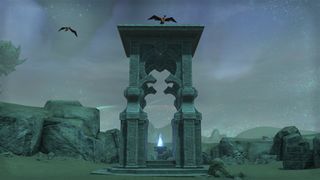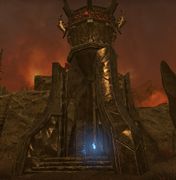Lore:Wayshrines
Wayshrines are shrines built to honor the Divines, most often built at sanctified sites far from civilization. Many of these holy sites were chosen by the devout due to specific miracles or blessed events that marked them, though others simply inspire feelings of reverence. It is theorized that each wayshrine corresponds to a star in the sky, acting as a conduit between Mundus and Aetherius. Indeed, it is commonly believed that the souls of the dead are drawn to the nearest wayshrine for spiritual escort to the afterlife.[1] Wayshrines vary from culture to culture, built to reflect local religious beliefs and to honor the most prominent regional Divines. The only consistent feature appears to be a central brazier or basin. The practice of building wayshrines has been present on Tamriel since time immemorial and even extends into the various realms of Oblivion.
Argonian wayshrines are perhaps the most ancient, built in the early Merethic Era in the same style as the ancient Argonian xanmeers. The stonework used to create these structures has been lost to time, forgotten even by the Hist. Each of the major races of Tamriel have a distinct style of construction, generally reminiscent of the regional architecture. Even in Valenwood, where dwellings are generally shaped from living wood in accordance with the Green Pact, ancient crude shrines built from large monolithic slabs of rock are found. It is unknown who built them, as both the Bosmer and Ayleids seemed to be unlikely candidates, and the engravings were seemingly meaningless apart from theories that they were made in devotion to Y'ffre.[2] In the depths of Coldharbour, menacing wayshrines built from cold iron and dedicated to Molag Bal can be found.[3]
Wayshrines have historically been associated with various religious rites and rituals. The Snow Elf shrines found in the Forgotten Vale of Skyrim were dedicated to Auri-El, and initiates of the Chantry of Auri-El would ceremoniously fill a ewer with water from each of the wayshrines' basins. Using Snow Elf teleportation magic, these wayshrines also served as a basic portal network throughout the vale, although they were magically sealed for a time following the death of their respective prelates.[4]
The various wayshrines found throughout Cyrodiil were dedicated to the Nine Divines. Crusaders and worshippers traditionally performed a pilgrimage to a wayshrine of each Divine to be absolved of sin. In 3E 433, the Divines allowed the spirit of Pelinal Whitestrake to speak with a pilgrim who had prayed at each shrine in order to stop the reincarnation of Umaril the Unfeathered. The pilgrim went on to mantle Whitestrake's position as the Divine Crusader.[5]
As first theorized by Corvus Direnni, the wayshrines create an interconnected "web of sojourn" which could be manipulated to create a permanent portal network. In order to do this, the "fast traveler" would have to attune himself to each wayshrine in order to create a "node". However, to test this theory the potential traveler would have to unmoor his soul from the Mundus.[1] This theory was proven correct during the time of the Planemeld, when a number of Soul Shriven escaped from Coldharbour. These soulless mortals, animated by a Daedric vestige and formed from chaotic creatia, were capable of using the wayshrines in this manner. Attunement to a wayshrine involved the lighting of a cold flame (or regular fire) in the central brazier. Along with smaller common shrines, the wayshrines also allowed these Soul Shriven who had been re-attuned to Anuic magic to reform in death, being reborn at the nearest shrine instead of being banished to Oblivion like a Daedra.[3]
The wayshrine web of sojourn is similar in function to a Transitus Network, a teleportation network also based on flaming braziers but usable by regular mortals.[6][7][8][9]
Gallery[edit]
See Also[edit]
- For game-specific information, see the Oblivion and Elder Scrolls Online articles.
